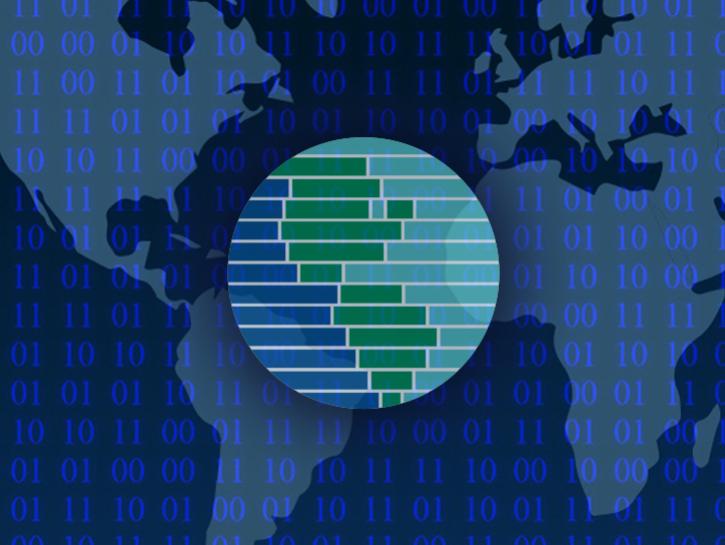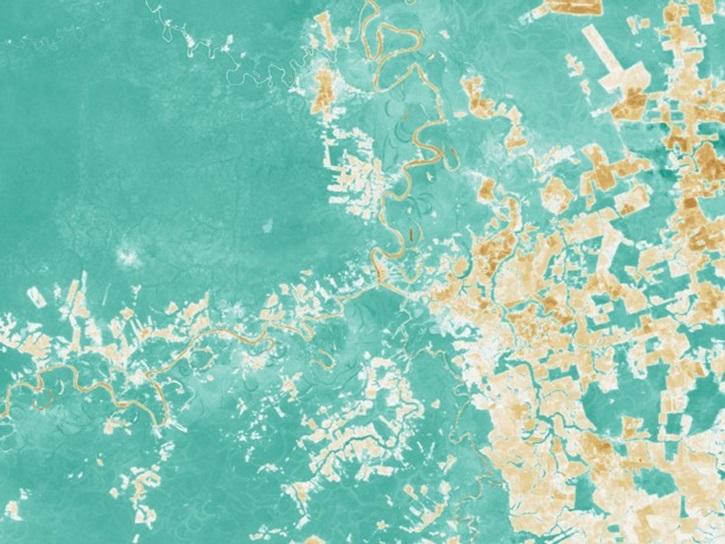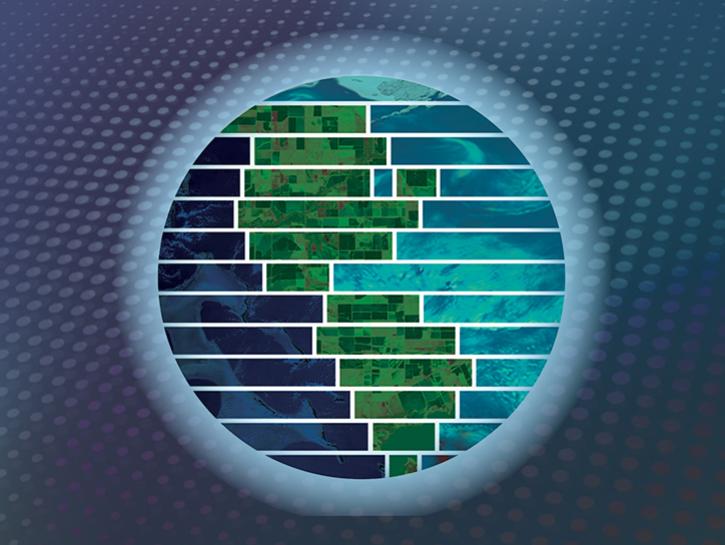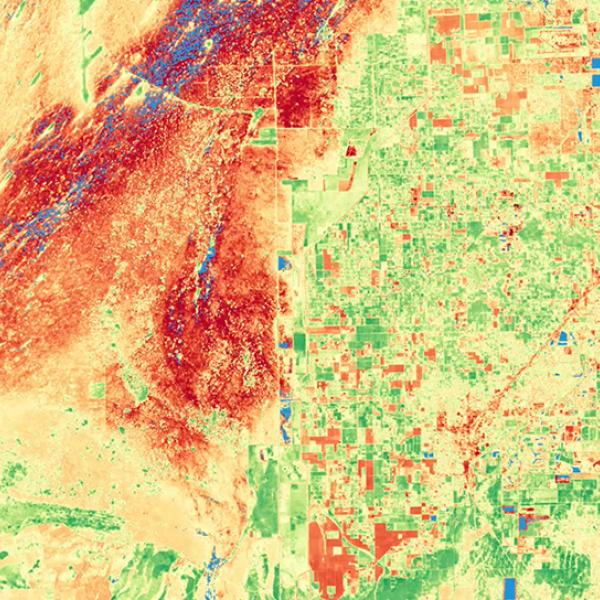Access a range of datasets and data tools to further your vegetation index research.
Vegetation indices measure the amount of green vegetation over a given area and can be used to assess vegetation health. NASA’s Earth-observing satellites collect several different vegetation indices, including Normalized Difference Vegetation Index (NDVI), Enhanced Vegetation Index (EVI), Leaf Area Index (LAI), and Fraction of Photosynthetically Active Radiation (FPAR).
NDVI values range from -1 to 1, and represent the difference between near-infrared (NIR) and red reflectance divided by their sum. Low values of NDVI generally correspond to barren areas of rock, sand, exposed soils, or snow, while higher NDVI values indicate greener vegetation, including forests, croplands, and wetlands. EVI is similar to NDVI, but it minimizes canopy-soil variations and improves sensitivity over dense vegetation conditions.
LAI is the amount of leaf area in an ecosystem; more specifically, it is the one-sided green leaf area per unit ground area in broadleaf canopies, and is one-half of the total needle surface area per unit ground area in coniferous canopies. FPAR is the fraction of photosynthetically active radiation (400-700 nm) absorbed by green vegetation. Both of these measurements are used for calculating surface photosynthesis, evapotranspiration, and net primary production, which in turn are used to calculate terrestrial energy, carbon, water cycle processes, and biogeochemistry of vegetation.
Overview of Vegetation Indices and Measurements
| Vegetation Index | Measurement |
|---|---|
| Leaf Area Index (LAI) | Vegetation greenness |
| Normalized Differential Vegetation Index (NDVI) | Vegetation health and greenness; responsive in dense vegetation |
| Enhanced Vegetation Index (EVI) | Vegetation greenness; responsive in dense vegetation |
| Fraction of Photosynthetically Active Radiation (FPAR) | Vegetation health and greenness |
| Soil-Adjusted Vegetation Index (SAVI) | NDVI corrected for soil brightness |
| Modified Soil-Adjusted Vegetation Index (MSAVI) | SAVI modified for effect of bare soil |
| Normalized Difference Moisture Index (NDMI) | Vegetation water content |
| Normalized Difference Water Index (NDWI) | Vegetation water content and plant stress |
| Normalized Burn Ratio (NBR) | Burned area and severity |
| Normalized Burn Ratio 2 (NBR2) | Burned area and severity; highlights water sensitivity; post-fire recovery assessment |
| Triangular Vegetation Index (TVI) | Vegetation health and greenness |
Learn How to Use Vegetation Index Data





Join Our Community of NASA Data Users
While NASA data are openly available without restriction, an Earthdata Login is required to download data and to use some tools with full functionality.
Learn About the Benefits of Earthdata LoginFrequently Asked Questions
Earthdata Forum
Our online forum provides a space for users to browse thousands of FAQs about research needs, data, and data applications. You can also submit new questions for our experts to answer.
Submit Questions to Earthdata Forumand View Expert Responses